How to Propagate Fiddle Leaf Fig Cuttings in Water
Fiddle leaf figs are a popular choice for adding a touch of elegance and greenery to your living space. You can now grow more of these beauties without breaking the bank by knowing how to propagate fiddle leaf fig cuttings in water.
If you’ve ever dreamed of expanding your fiddle leaf fig collection or are nursing a struggling plant back to health, you’re in luck! Now you can try this simple yet effective method of fiddle leaf fig propagation that can help you grow new plants from your existing ones with ease
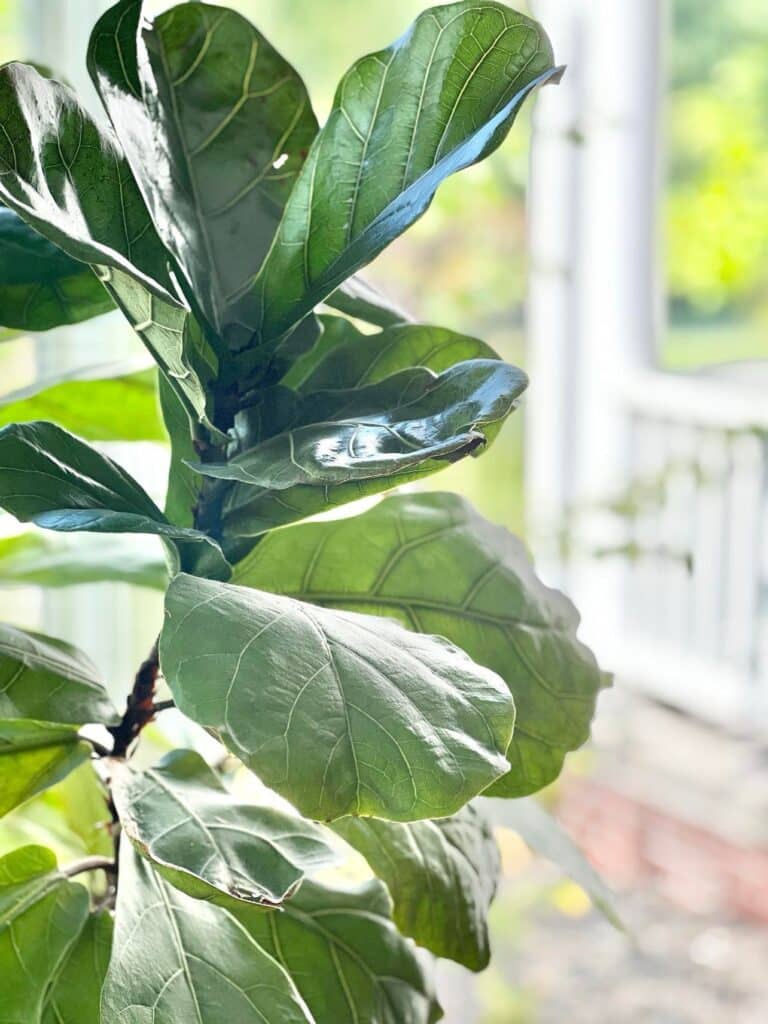
This blog contains affiliate links. This means a small commission is earned if you make a purchase by using this link. The price you pay will be the same whether you use the affiliate link or go directly to the vendor’s website using a non-affiliate link.
Understanding the Fiddle Leaf Fig Plant
Before we get our hands dirty, let’s take a moment to appreciate the magnificence of fiddle-leaf fig trees (Ficus lyrata).
My first fiddle leaf fig plant was one that I purchased online. I loved it so much that now I am the proud owner of three of these plants and have donated all of my faux fiddle leaf figs.
They are not huge, but they are growing!
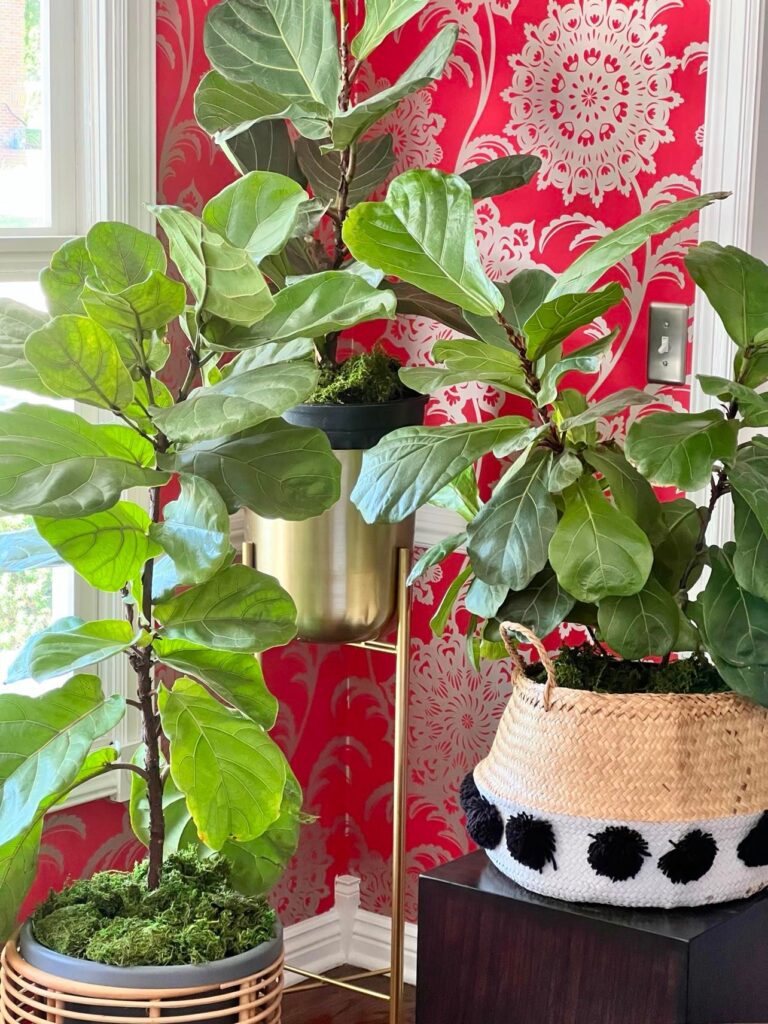
Furthermore, fiddle leaf figs are incredibly versatile! From bohemian to contemporary, they fit seamlessly into various decor styles, making them a favored choice among designers and homeowners alike.
Known for their large, violin-shaped leaves, these plants are a stylish addition to any room. Fiddle leaf figs have surged in popularity in interior design for several compelling reasons.
First, their striking, oversized large leaves add a touch of drama and sophistication to any room, instantly elevating the aesthetics of the space. Their lush green foliage brings a sense of vitality and natural beauty indoors. My plants love the bright indirect light in my kitchen and dining room. They bring a real sense of warmth to the space.
Why Choose Water Propagation?
While fiddle leaf fig trees can be propagated through various methods, water propagation is truly the easiest way!
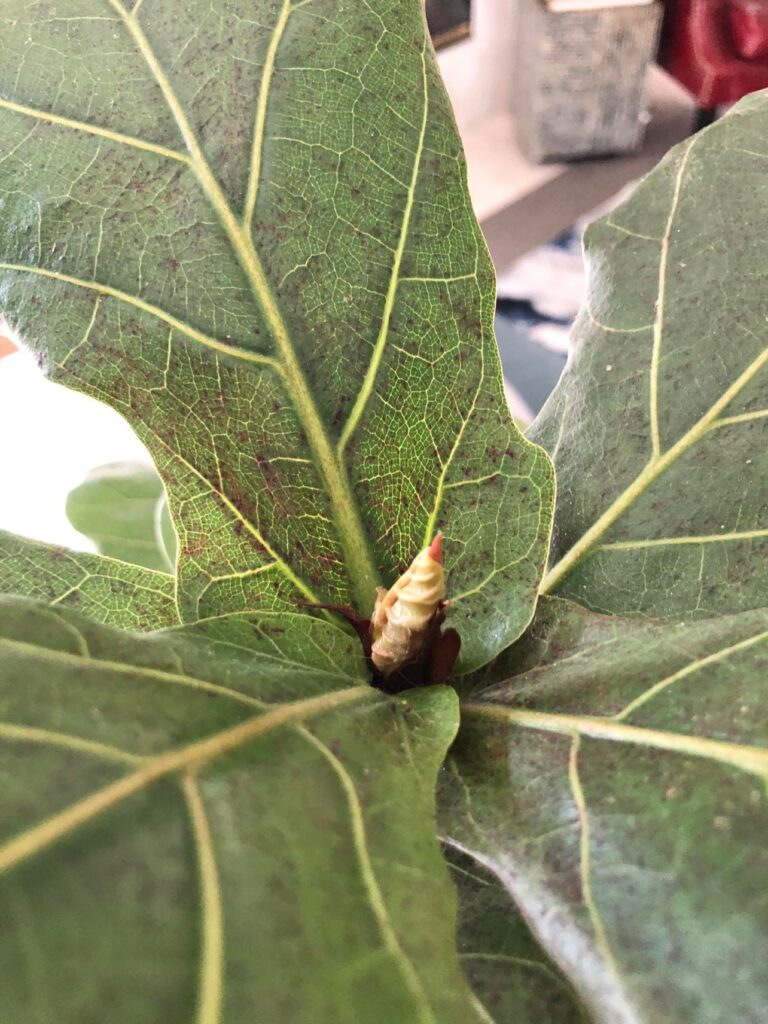
Water propagation offers a clear view of the root development process, allowing you to monitor the plant’s progress closely. Watching the roots develop in water gives you a front-row seat to nature’s magic. Plus, this transparency ensures that you can address any issues promptly, leading to healthier and more successful propagation.
Also, water propagation is less stressful for the cutting, as it avoids the shock that can sometimes occur when transitioning from water to soil.
It’s also a cleaner and more controlled method, reducing the risk of soil-borne pests or diseases.
Best of all, it is just plain fun to watch the new growth in the water and, of course, free plants are always a good idea!
Supply List
To get started with water propagation, you’ll need a few basic materials:
- Healthy Fiddle Leaf Fig Cuttings: Choose a healthy stem tip with a few leaves. Make sure it’s at least 6 inches long and has a couple of nodes (those little bumps where leaves grow).
- Clean Pruning Shears: A clean cut will give your leaf cuttings the best chance to thrive. Sterilize your pruning shears before taking any cuttings.
- Clear Glass Vessel: Select a clear glass jar, vase, or propagation station that will allow you to see the roots as they develop. This makes the whole process even more exciting!
- Water: Opt for filtered or distilled water to prevent the buildup of minerals that could potentially harm the roots. You can use tap water but you will get mineral buildup on the glass.
- Patience: While not a material, patience is essential when propagating plants. It takes time for those roots to grow!
How to Propagate a Fiddle Leaf Fig in Water
Now, let’s jump into the fun part – propagating your fiddle leaf fig in water!
Step 1: Take Healthy Cuttings
The first step is to snip a healthy cutting. To get started, choose a stem from a parent plant that’s at least 6 inches long and has a few leaves on it. Use a sharp, clean pair of pruning shears or scissors to make a clean cut just below a leaf node (the bump where the leaf meets the stem). Use clean pruning shears and make sure to snip at a slight angle to increase the surface area for rooting.
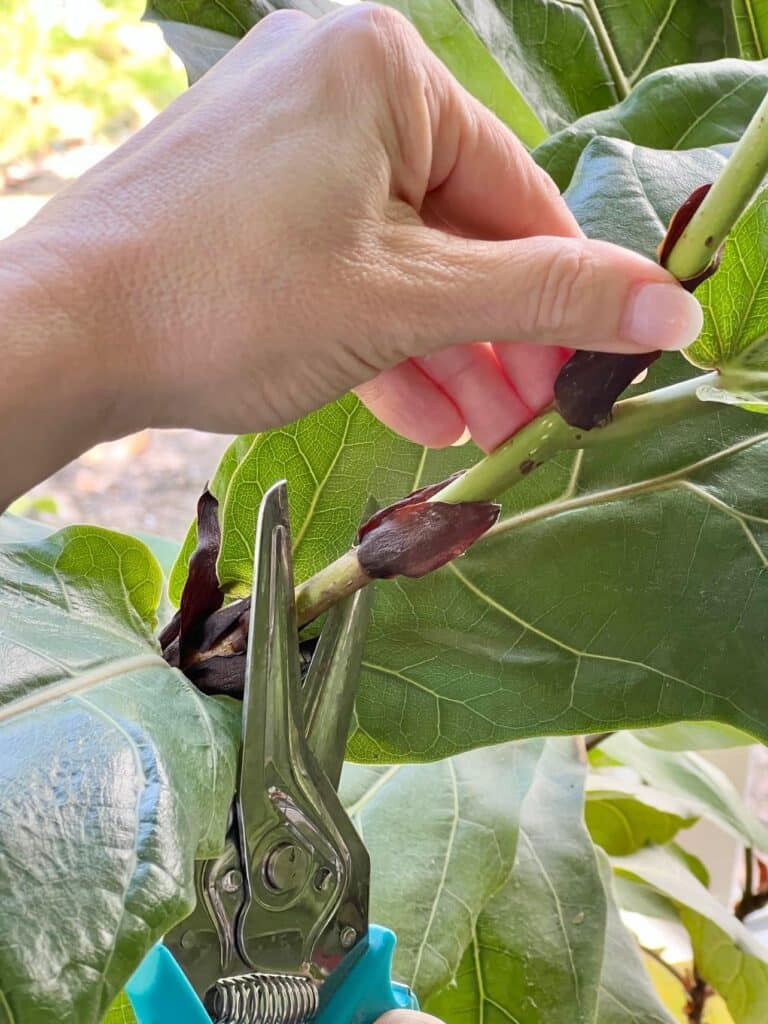
You can make sure your shears are clean by thoroughly wiping them down with rubbing alcohol and a towel.
To be honest, I always hate making the actual cut because every leaf is such a prize! But I know that this little “surgery” is actually beneficial for a healthy plant and will give me a beautiful new indoor plant!
Step 2: Remove Lower Leaves
Trim the lower leaves of your cutting, leaving at least one or two nodes exposed. You can even trim it down to a single leaf as long as there are healthy nodes available. These nodes will be submerged in water and will eventually develop into roots.
Step 3: Place in Water
Fill your glass vessel with at least 3 inches of clean water. Place the cutting in the water, ensuring that the nodes you exposed are submerged. This could not be more simple!
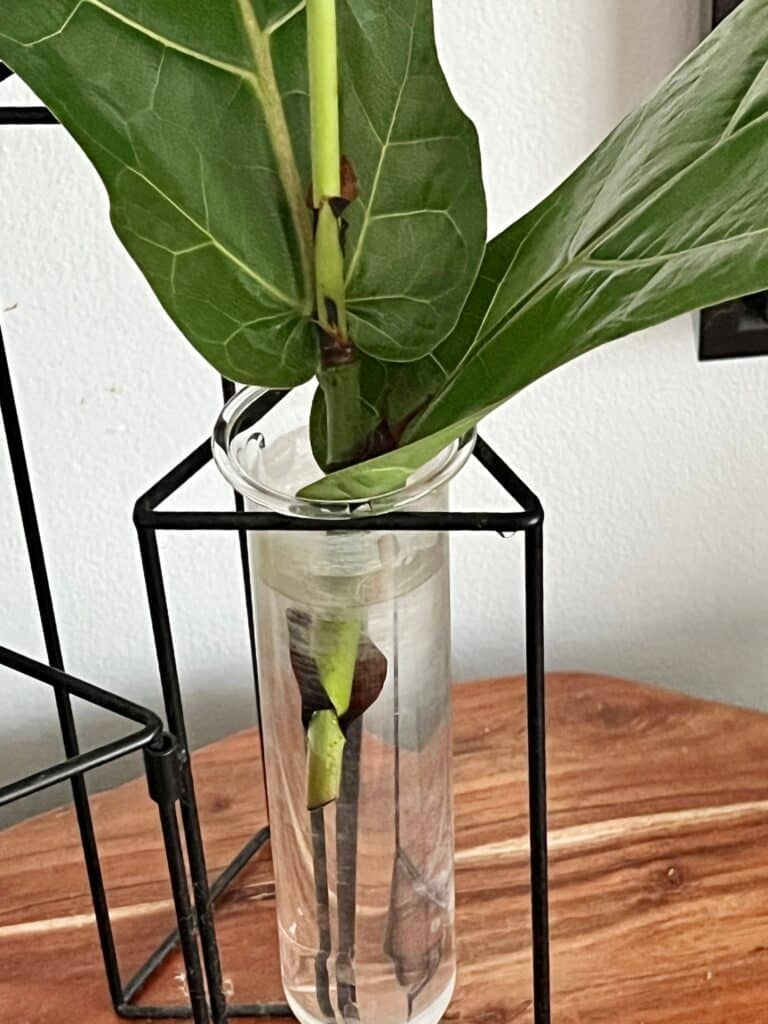
Step 4: Find the Right Spot
Fiddle leaf figs can be a little “fiddly” about light and prefer a bright indirect light source.
Direct sunlight can be too harsh for the delicate new roots and a shady area will not give your stem cuttings enough light.
A windowsill with filtered light or a well-lit room away from direct sunlight is ideal.
Step 5: Change the Water
This is the part that a lot of people forget. You need to periodically change the water!
For best results, change the water in your vase every few days. Your cutting will have a better chance if the water level stays above the emerging roots. This also helps prevent the growth of mold and keeps the water fresh for your developing roots.
Step 6: Be Patient
It is so hard to be patient! But when you see the first new roots emerge, it is all worth the wait!
Roots take time to develop, so don’t be disheartened if you don’t see immediate progress. Just keep changing the water and monitoring the light and you will eventually see healthy roots!
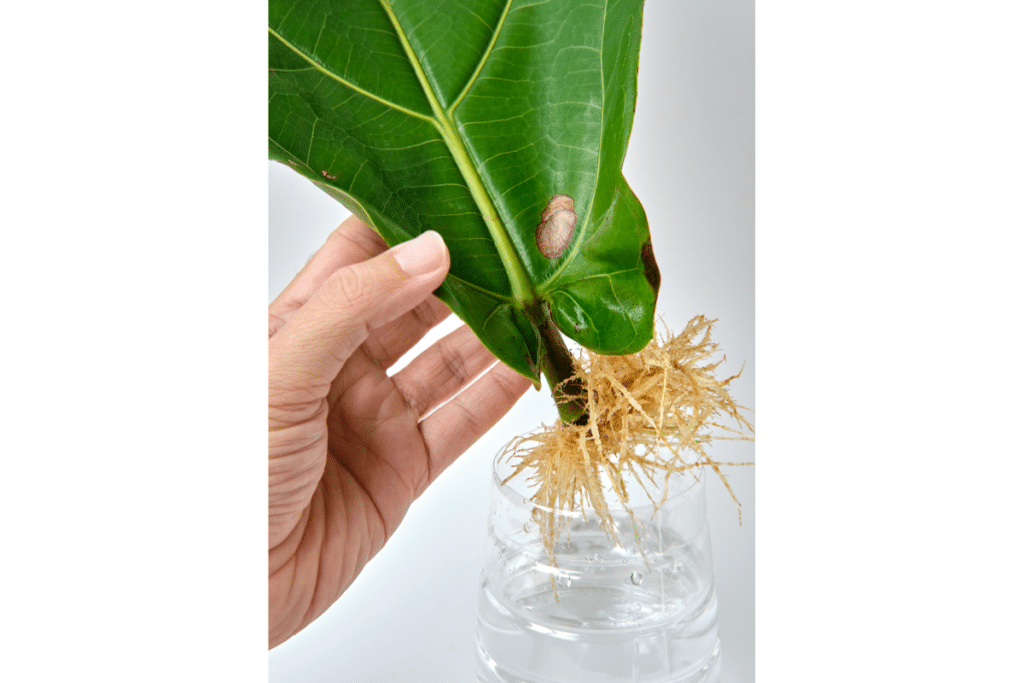
Step 7: Transplanting
Once your cutting has developed a good root system (at least a few inches long), it’s time to transplant it into soil. Choose a well-draining potting mix and a pot that’s slightly larger than the root ball. Remove your plant cutting and rinse the roots with fresh water. Gently plant your cutting in fresh soil, water it thoroughly, and place your newly planted fiddle leaf fig in a place of honor in your home!
All of the waiting is definitely worth it!
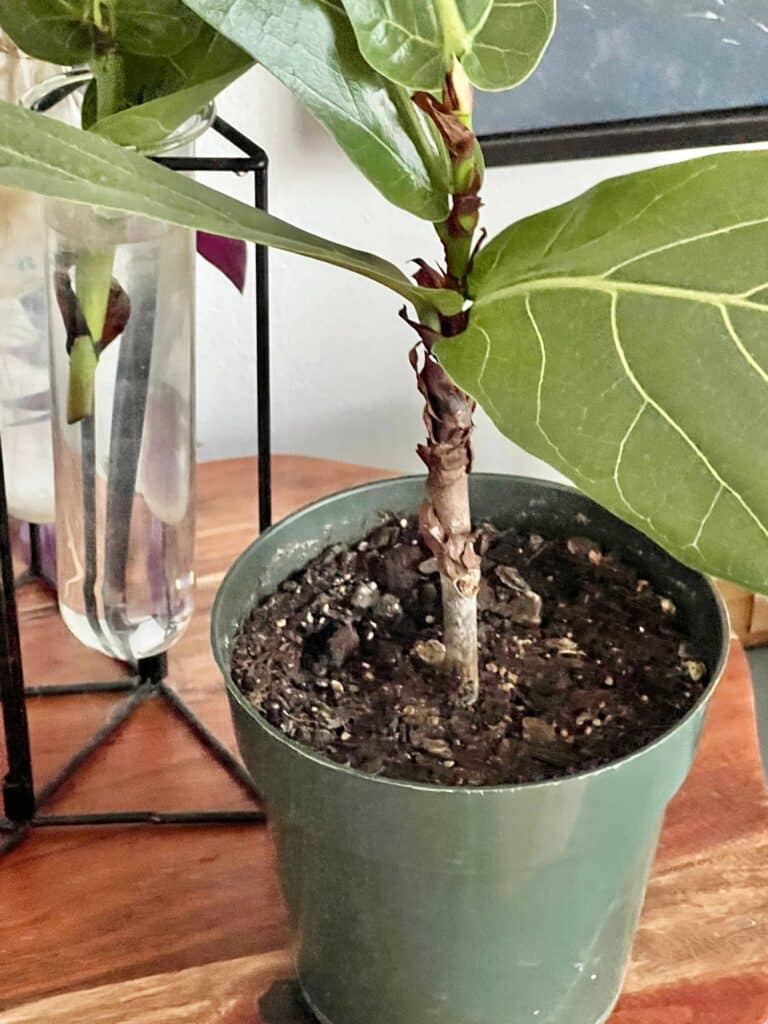
Tips for Fiddle Leaf Fig Care While Propagating
My husband and I have an ongoing battle with the thermostat setting. I, like a fiddle leaf fig, have a small temperature range in which I am comfortable. (Yes, I am a temperature princess!)
Fiddle leaf fig plants can be finicky. But once you find the sweet spot for light in your space, you have won most of the battle! Here are some additional tips for success with your plant propagation.
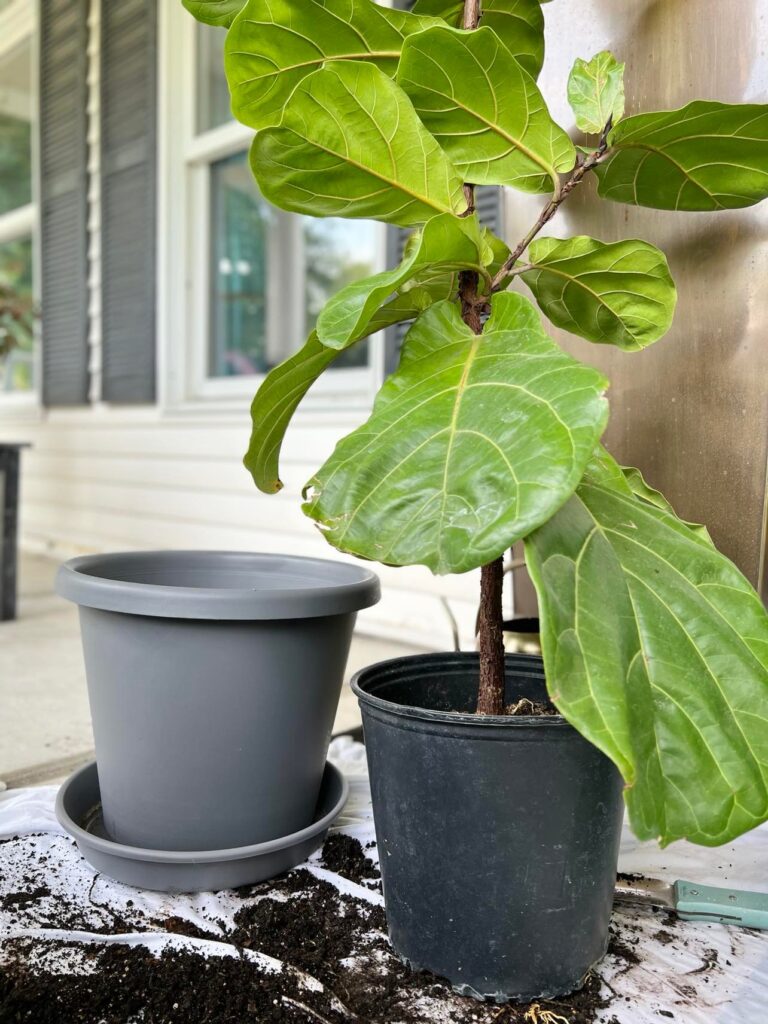
- Temperature Matters: Fiddle leaf figs thrive in warm temperatures. Shoot for temperatures between 70-75 degrees.
- Humidity Boost: Fiddle leaf figs prefer a humid environment. If your indoor air is dry, consider placing a humidity tray near your plant or using a small humidifier to maintain the right humidity levels.
- Don’t Rush Transplanting: Wait until the roots are several inches long before moving your cutting to the soil. This ensures that your new plant has a strong foundation.
- Choose the Right Potting Mix: When transplanting, use a potting mix specifically designed for houseplants. You can also mix in some peat moss to improve drainage.
- Transplant When the Plant Overgrows the Pot: Believe it or not, your small cutting will result in a plant that could eventually outgrow its pot! Be sure to safely transplant your fiddle leaf fig to a larger pot when it outgrows its original pot.
How long does it take a fiddle leaf fig to root in water?
Ah, the waiting game! So, how long does it take for those fiddle leaf fig cuttings to sprout roots in water?
On average, you might start noticing some serious root action anywhere from a few weeks to a couple of months.
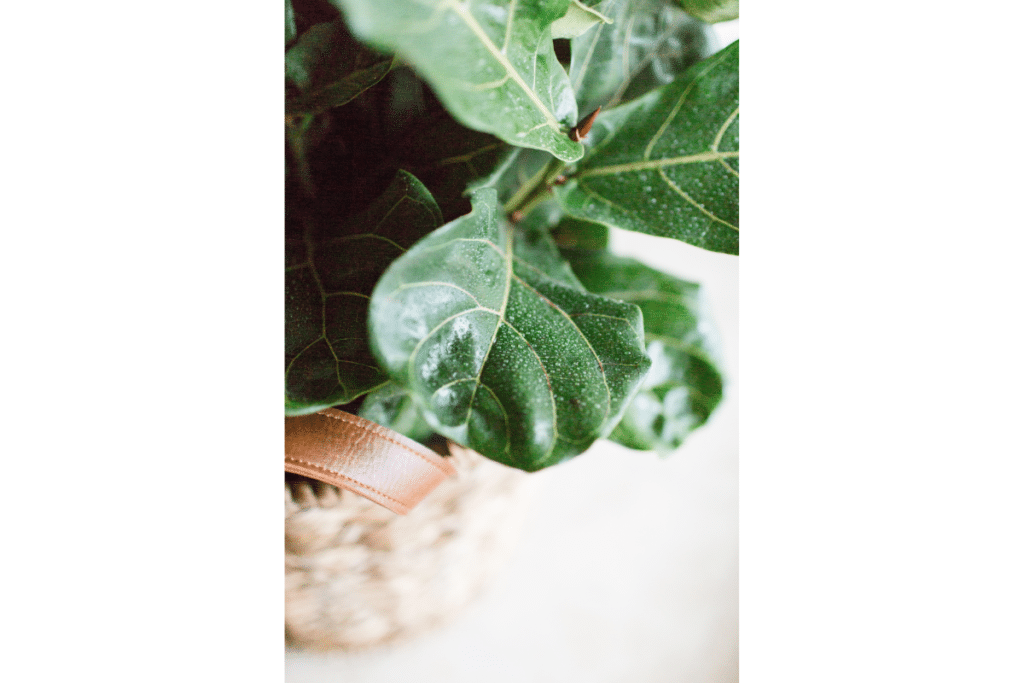
As you wait, just remember…your little cutting is soaking up the light, sipping on water, and channeling as much energy as possible into new root growth. The exact timing depends on maintaining the right conditions, the health of your cutting, and even Mother Nature’s mood swings.
Keep an eye out, and remember, good things come to those who wait (and keep changing the water every now and then)!
What is the Best Time of Year to Propagate a Fiddle Leaf Fig in Water?
The best time to propagate your fiddle leaf fig is during its growing season, which typically aligns with spring and early summer.
During this period, the plant is in its most active phase, making it more receptive to the propagation process. With warmer temperatures and increased daylight, your cutting has the ideal conditions to establish roots and grow into a strong, healthy plant.
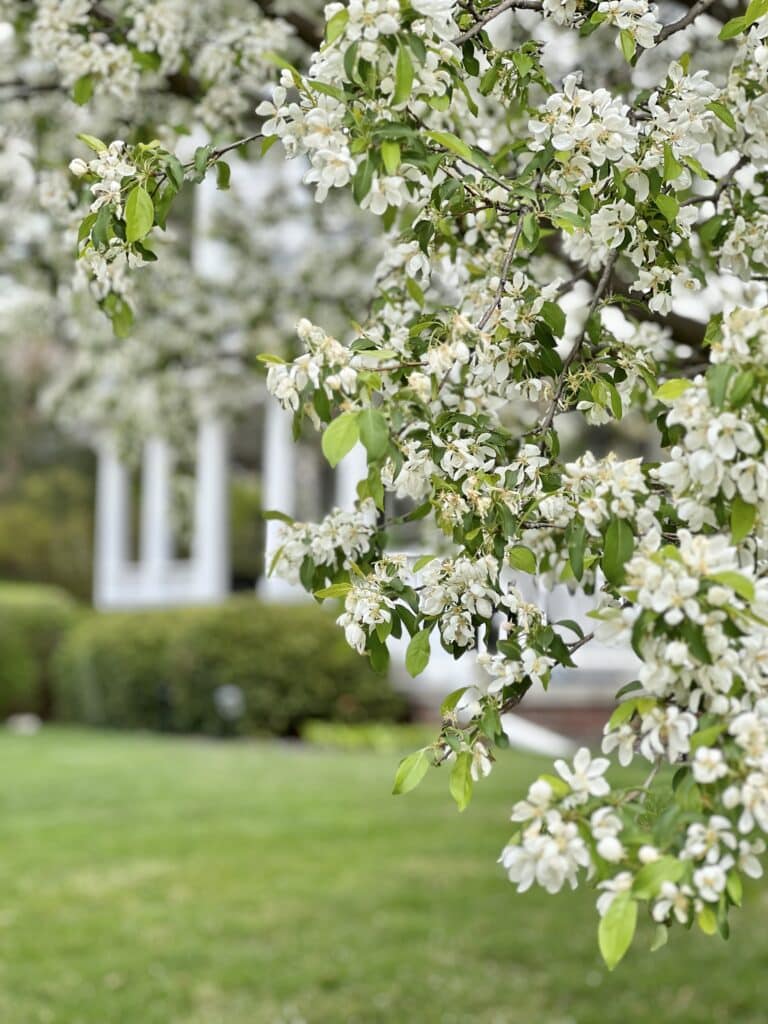
However, don’t fret if you’re feeling inspired to propagate in other seasons. I have had success with propagation in the middle of winter! With the right care and attention, fiddle leaf fig cuttings can still thrive year-round; it might just take a little extra patience.
Do fiddle leaf figs need rooting hormone?
So, you might be wondering if your fiddle leaf figs need a little growth hormone kickstart to encourage those roots in water, right? Well, the great news is that fiddle leaf figs are actually pretty chill when it comes to rooting hormones.
While some folks swear by it to speed things up, these plants are also perfectly content to do their root thing without it. If you’re feeling adventurous and want to give your cuttings a nudge, go ahead and use a rooting hormone – it won’t hurt. But if you’re more of a laid-back gardener, just let nature take its course. Your fiddle leaf figs have got this root-growing thing down naturally!
What Houseplants Can You Propagate Easily?
There are many other plants that you can easily propagate in water! Using the same basic method, try any of these beautiful indoor plants:
- Monstera
- Pothos
- Philodendron
- Ivy
- Peace Lily
- Spider Plant
- Lucky Bamboo
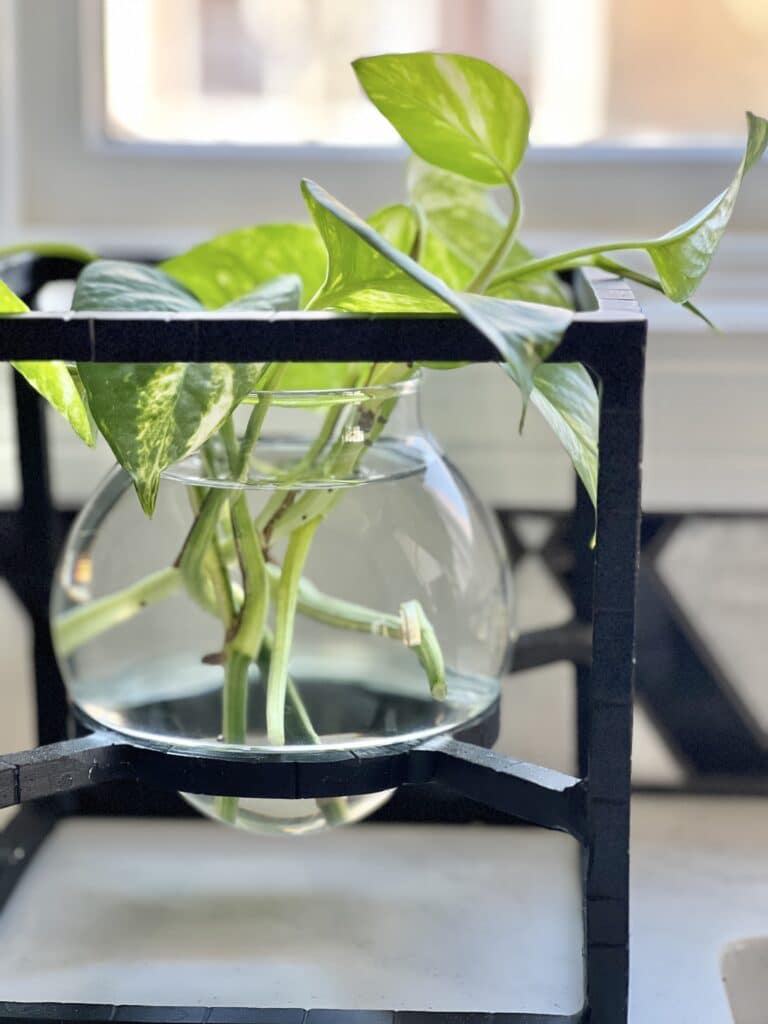
Decorating Ideas for a Fiddle Leaf Fig Plant
Statement Plant: Place your fiddle leaf fig in a decorative pot or planter and make it the focal point of your room. Its large, glossy leaves and height will instantly draw attention and add a touch of elegance to your space.
Dining Room Drama: Elevate your dining area by positioning a fiddle leaf fig nearby. Place it in an empty corner, position it between windows, or place it smack dab in the middle of the. It’ll make family meals and gatherings feel even more special.
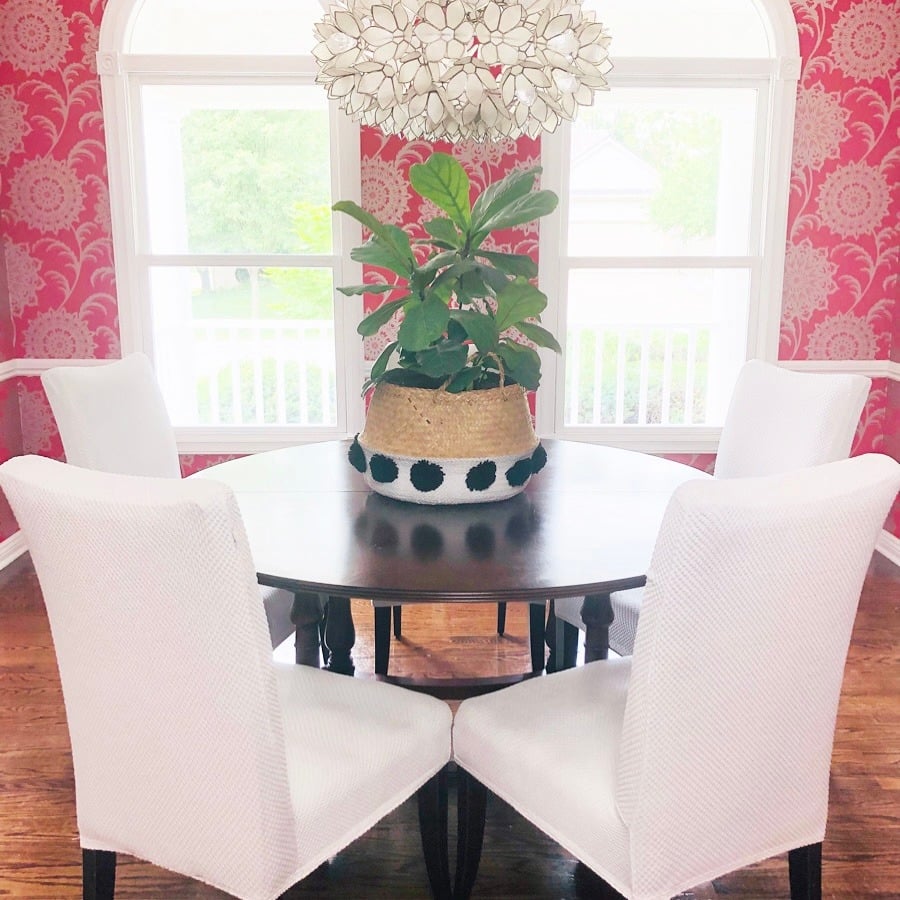
Corner Companion: Position your fiddle leaf fig in a corner to fill empty spaces and add a vibrant, green touch to otherwise unused areas. You can also place the plant beside a chair or sofa to soften the edges of the furniture.
Entryway Elegance: Welcome guests with a fiddle leaf fig near your entrance. Its lush foliage creates a warm and inviting atmosphere as soon as they step inside.
Natural Room Divider: Use a fiddle leaf fig as a natural room divider. Place it in a decorative pot on a low stand to separate different areas within an open-concept living space. This is a particularly good idea if you are trying to create a designated foyer area where one does not exist.
Boho Chic: Embrace the bohemian style by incorporating your fiddle leaf fig into a collection of eclectic planters, pots, and home decor. Layering different textures and patterns can create a trendy, laid-back vibe.
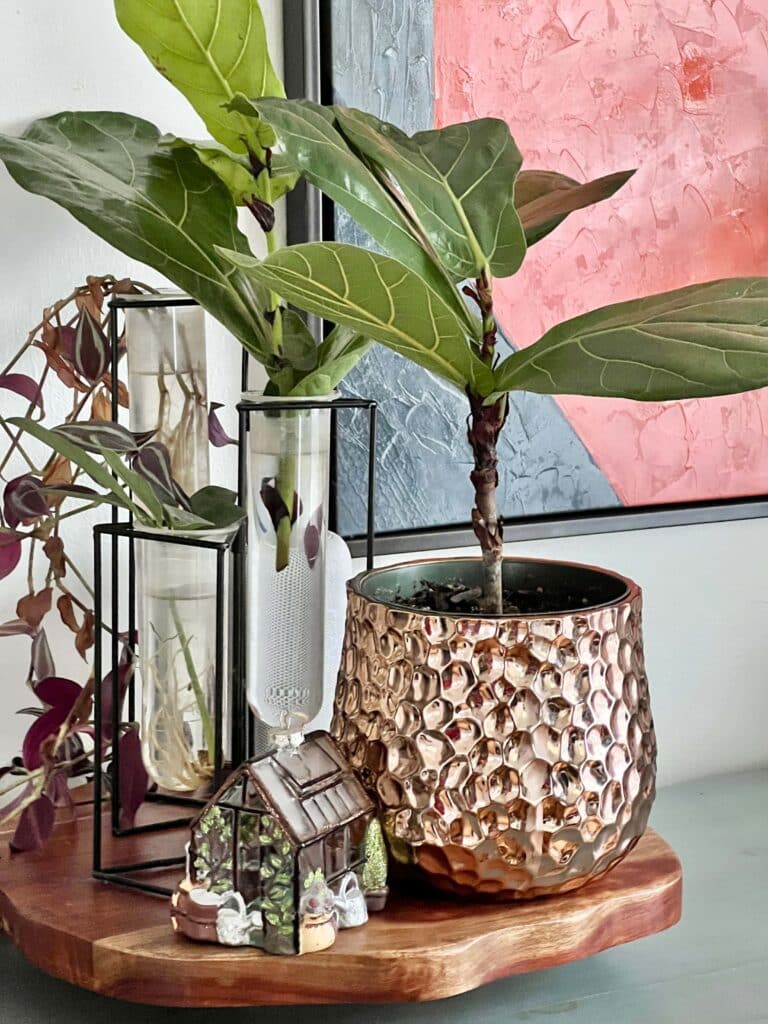
Minimalist Charm: For a minimalist look, opt for a sleek, white, or neutral pot to showcase the plant’s simplicity and elegance. Place it against a white wall for a clean, contemporary aesthetic.
Bedroom Beauty: Add a touch of tranquility to your bedroom by placing a fiddle leaf fig near a window. Its greenery can create a calming atmosphere and enhance your sleep space.
Window Wonderland: Maximize natural light by positioning your fiddle leaf fig near a sunny window. Its upward growth will beautifully frame the view outside while purifying the indoor air.
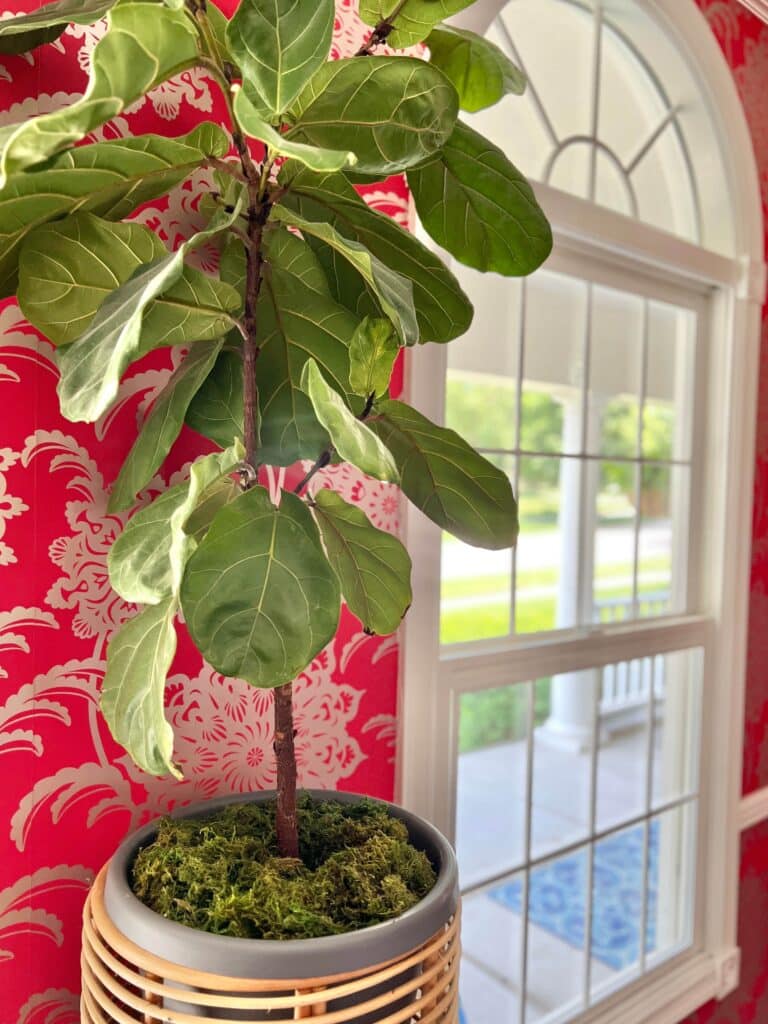
Kitchen Companion: Bring life to your kitchen by placing a fiddle leaf fig on a countertop or in a sunny corner. Its vibrant foliage can complement the fresh, natural vibe of the kitchen.
Office Oasis: Boost productivity and air quality by placing a fiddle leaf fig in your home office. Its presence can create a refreshing, inspiring work environment. I keep one of mine in my home office right by the sofa. I love having it nearby as I work in my office!
Bathroom Bliss: Fiddle leaf figs love the humidity of a bathroom. Use that to your decorating advantage! Transform your bathroom into a spa-like retreat by placing a fiddle leaf fig near a well-lit window or on a sturdy shelf. Its lush green leaves will add a touch of nature’s serenity to your self-care oasis.
Planting the Final Root
And now you know how to propagate a fiddle leaf fig in water! It could not be easier!
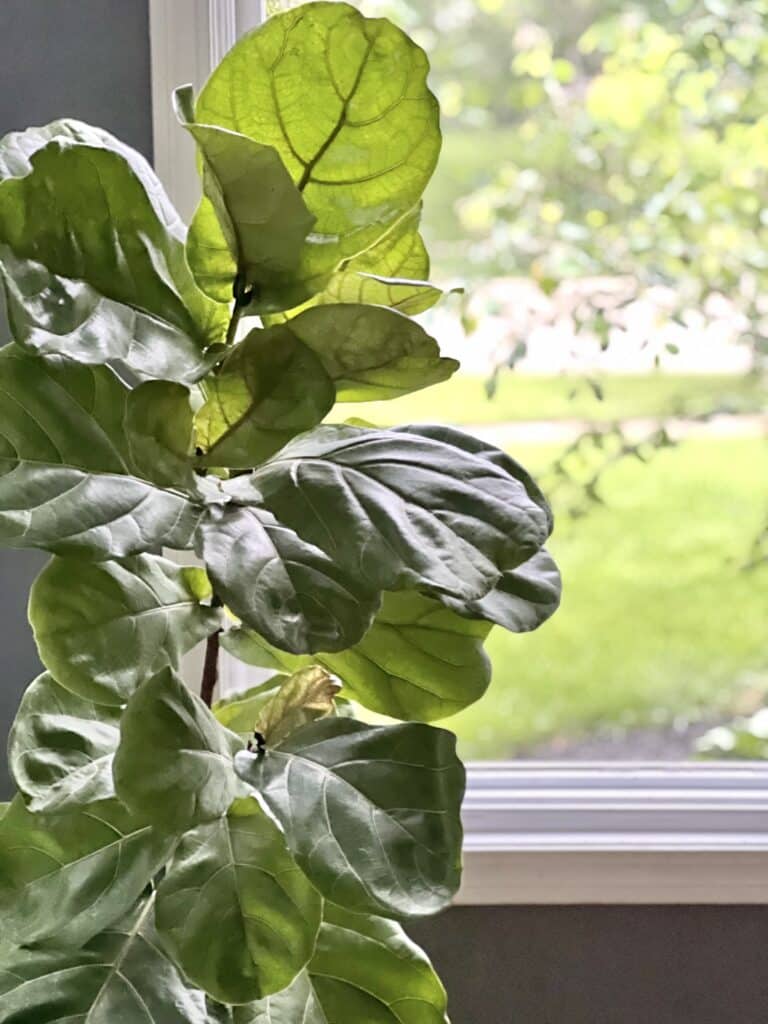
Watching those tiny roots grow into a thriving plant is such a rewarding experience that connects you to the wonders of nature. Remember, each cutting is a testament to your care and patience, so celebrate every step of the journey. Whether you’re a seasoned plant parent or a beginner, water propagation is a fantastic way to expand your plant collection and share the joy of gardening with others.
Before you know it, you’ll have a new fiddle leaf fig to grace your home, or maybe even to share as a thoughtful gift with friends. Happy propagating, and may your indoor garden flourish!
Cheers!

Don’t Forget to Pin It!
Pin the image below to your boards on Pinterest (just click the Pin button in the top left corner). You can also follow along with me on Pinterest!
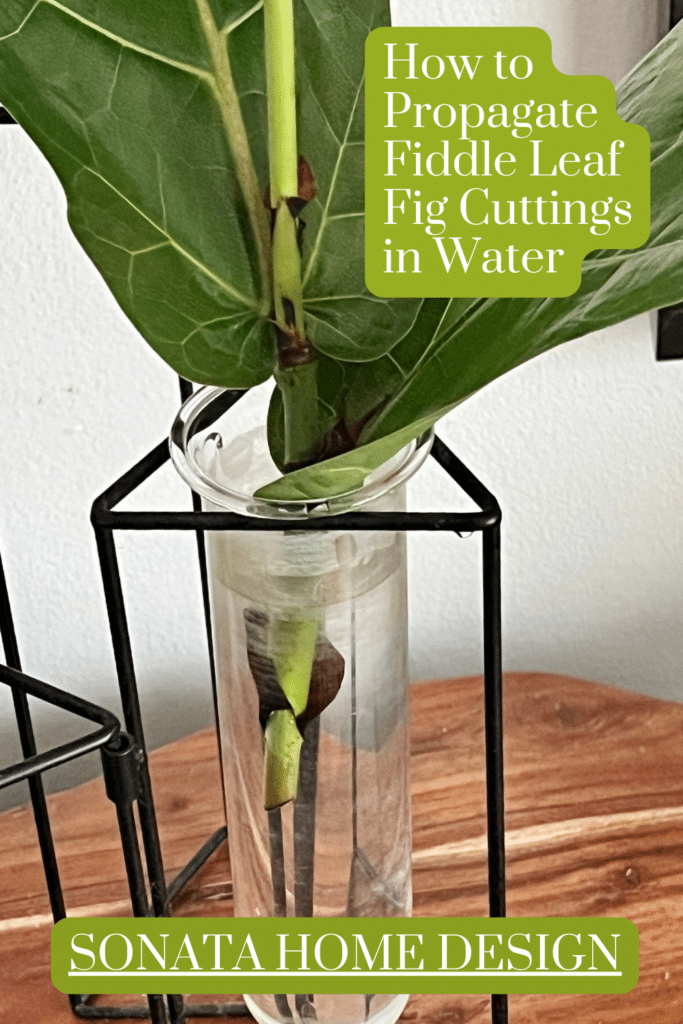
Got Plants?
My Five Favorite Easy Care Indoor Plants


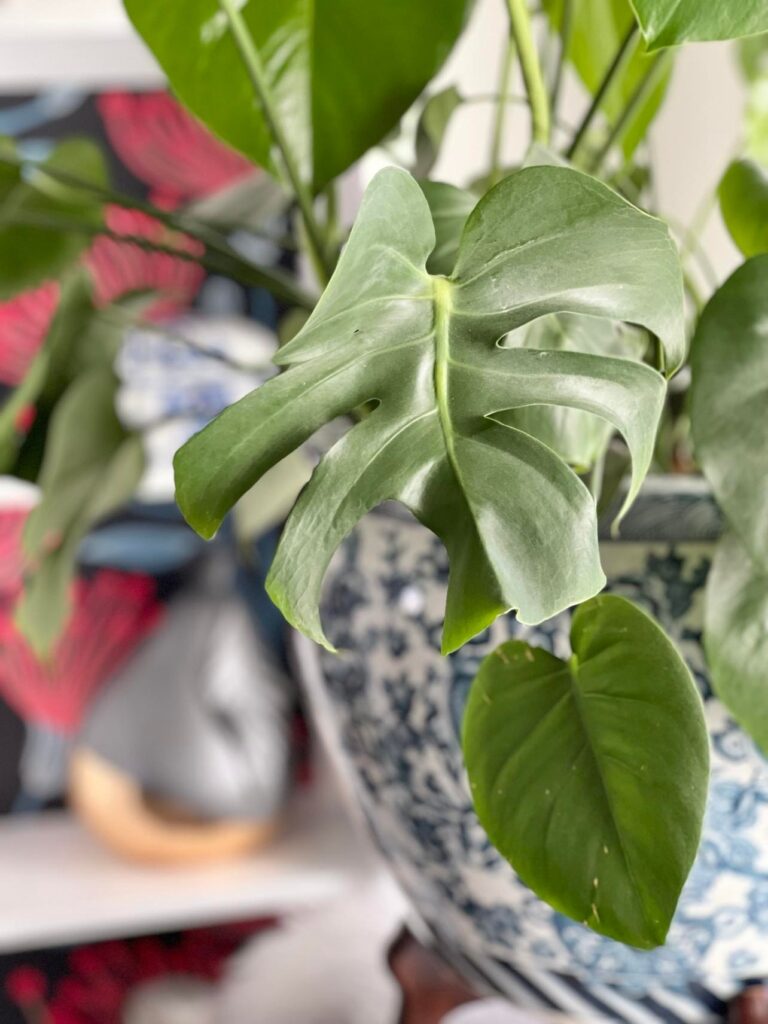
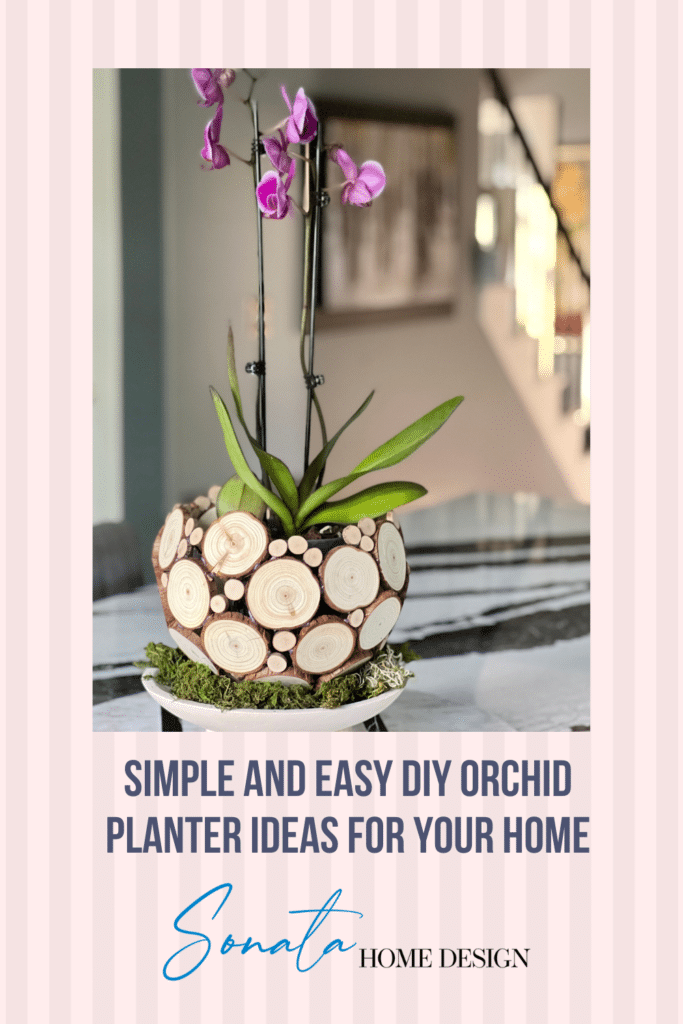
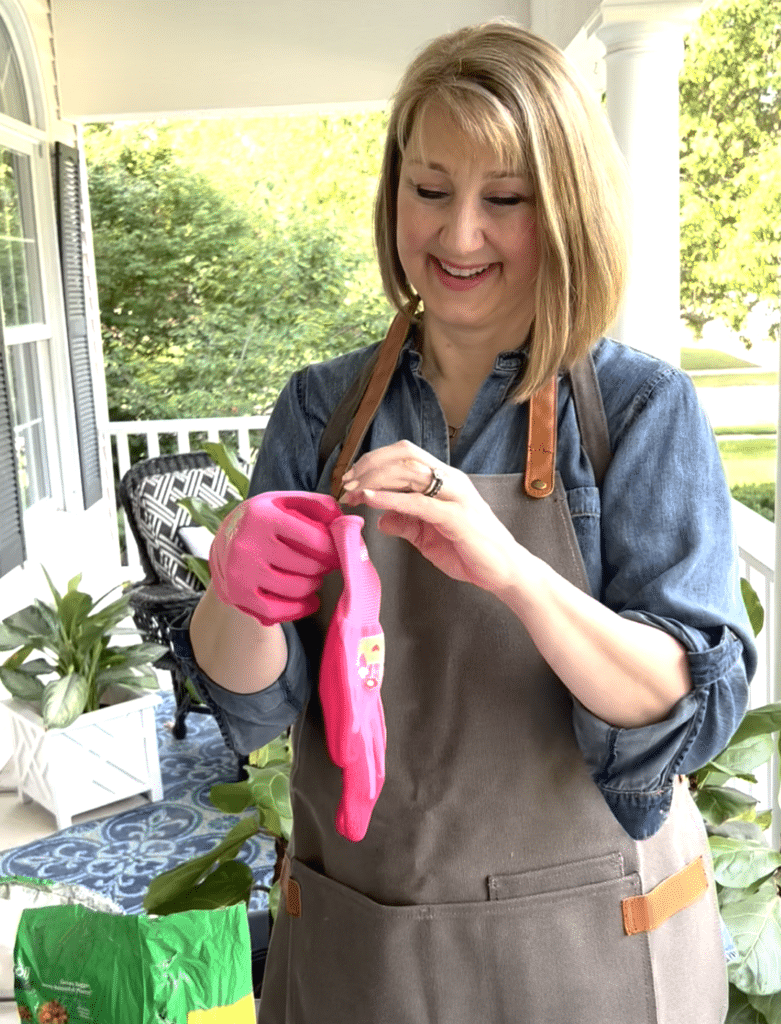

👏🪴👏🪴👏🪴👏🪴 😍
Love looking at a Fiddle leaf from a designer’s perspective!
Thank you, Madeline! Fiddle leaf figs are so fun to use in home decor. I would love one in every room! I better keep propagating!
This is such a great post, Missy. I have a Fiddle Leaf Fig Tree that needs a trim, so I will try to do this. Thanks for all of the great tips.
It takes some patience but it is worth it! Thanks, Wendy!
Wow, Missy! This was such a helpful read!! Thanks so much for sharing your knowledge!
Thanks, Rachel! I love sharing about my plant babies!